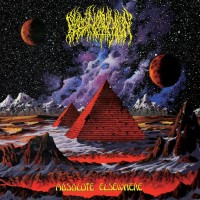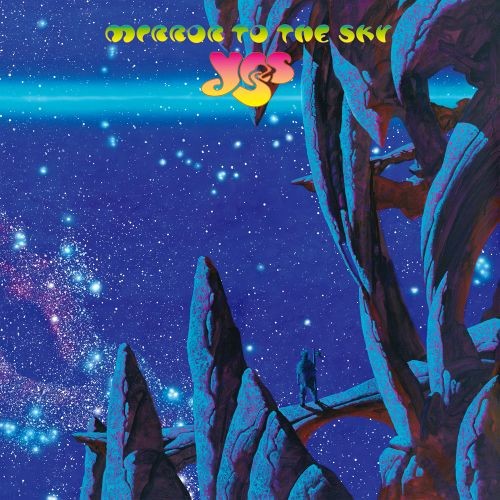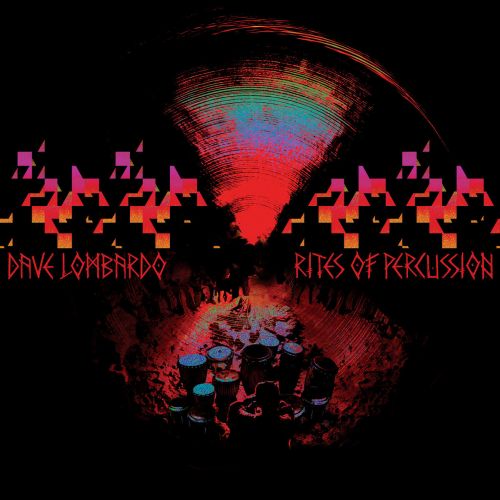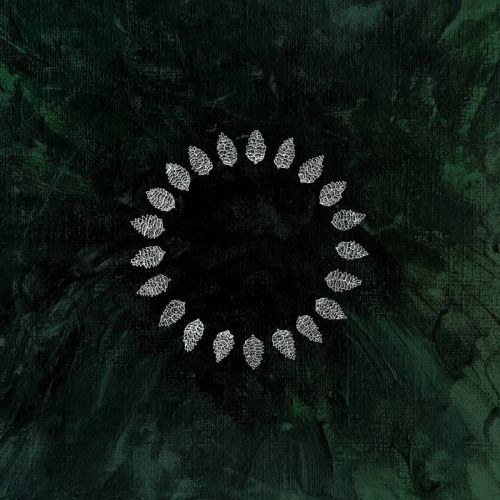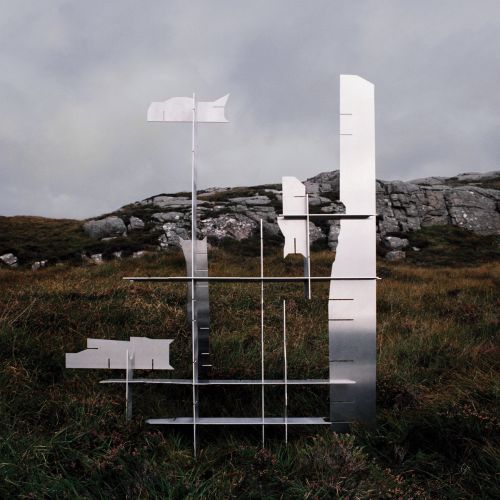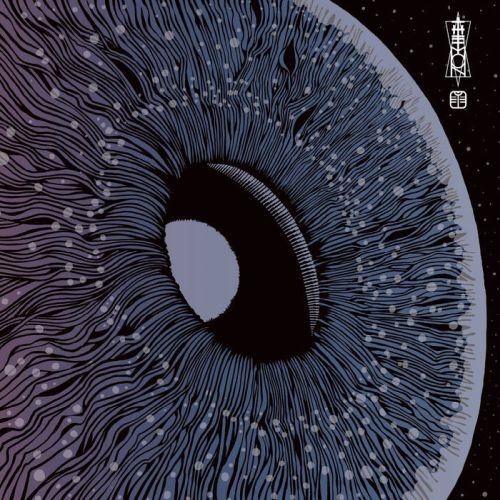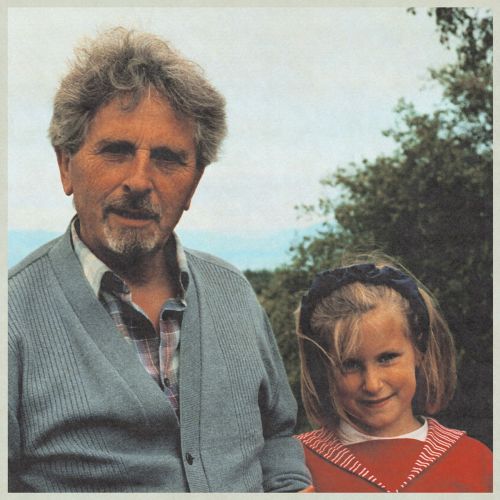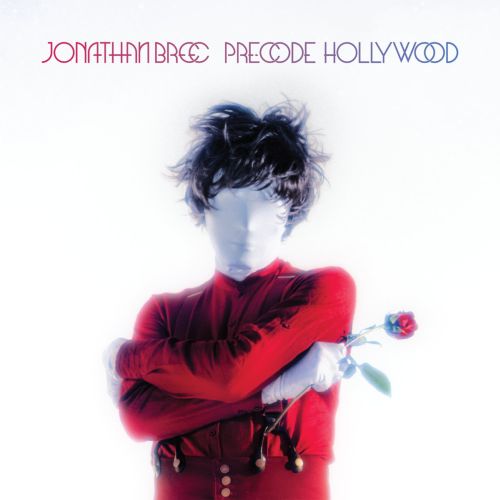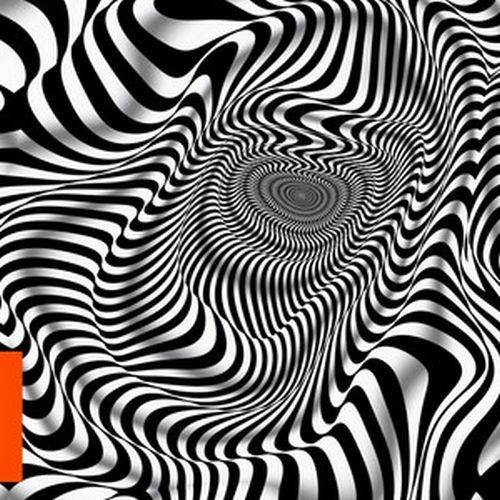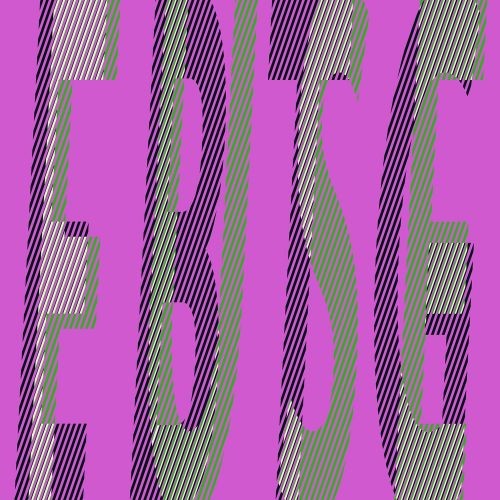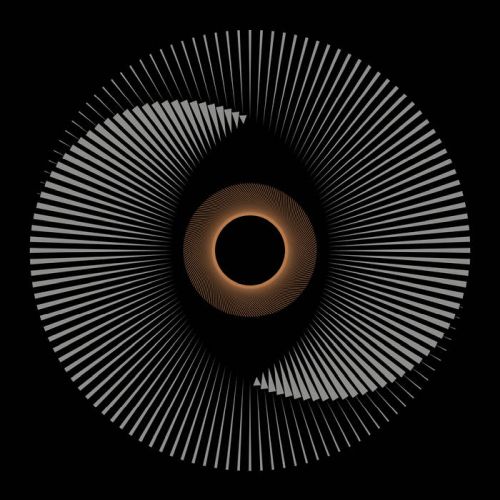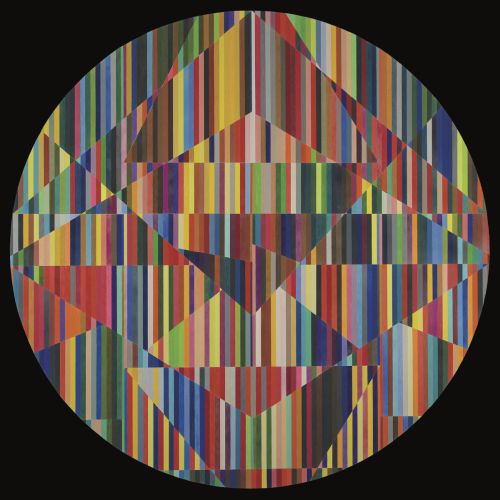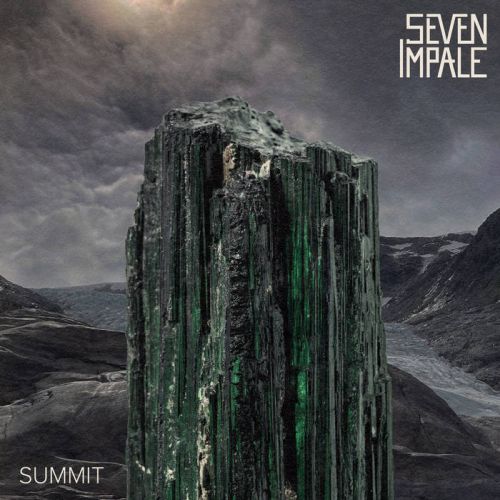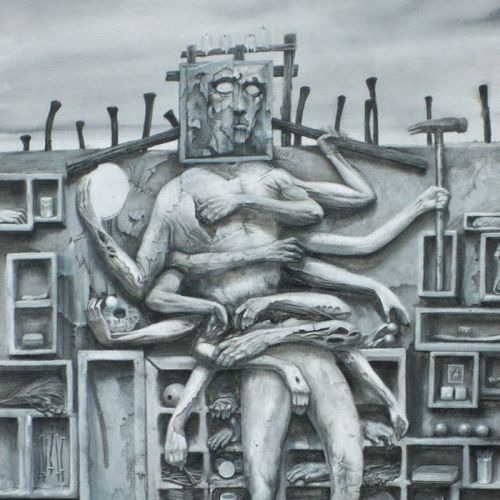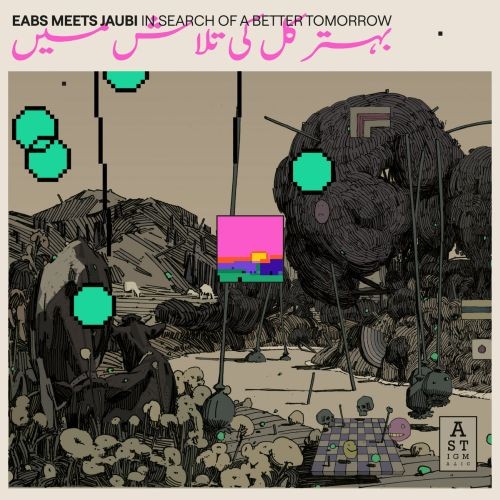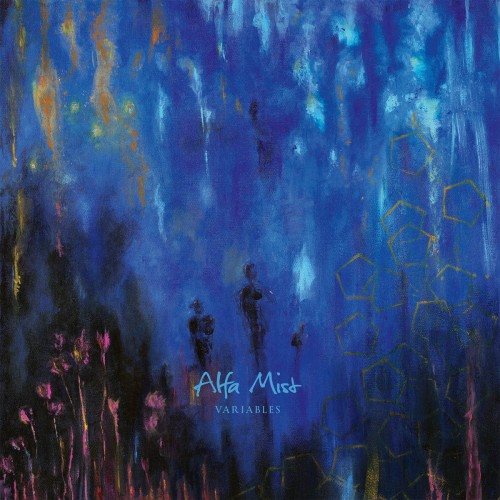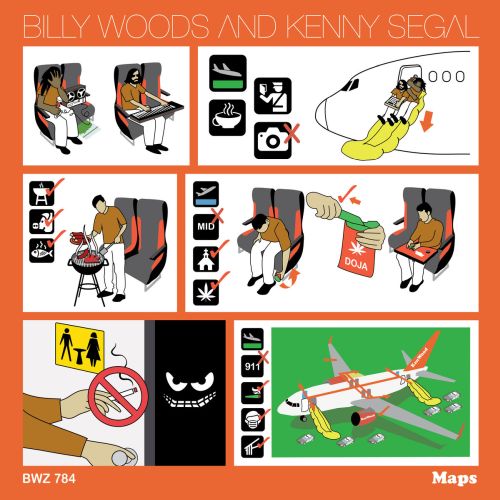Wait A Minute! This Isn't Metal! - May 2023

| Written by: | RaduP, musclassia, nikarg |
| Published: | June 09, 2023 |
Wait A Minute! This Isn't Metal! - May 2023
Metal Storm's outlet for nonmetal album reviews
The place where we'll talk about music without growls or blast beats
unless they still have those but still aren't metal
unless they still have those but still aren't metal
We here at Metal Storm pride ourselves on our thousands of metal reviews and interviews and article; metal is our collective soul and passion, which is why we bother with this junk. That being said, we'd be lying if we stuck to our trve-kvlt guns and claimed that metal is the only thing we ever listen to. Whether we want to admit it or not, we do check out some other stuff from time to time; some of us are more poptimistic than others, but there's a whole world out there aside from Satan-worshiping black metal and dragon-slaying power metal. We do already feature some nonmetal artists on our website and have a few reviews to back them up, but we prefer to limit that aspect of the site to those artists who have been a strong influence on the metal scene or who are in some way connected to it. This article series is the place for those artists who don't matter to metal in the slightest but still warrant some conversation - after all, good music, is good music, and we all know metal isn't the only thing on this planet for any of us.
Down below, you might find some obscure Bandcamp bedroom projects or some Billboard-topping superstar; as long as it ain't metal and the album itself isn't a best-of compilation, it fits. Obviously, we're certain that not everything will be for everybody (you guys can be viciously territorial even when metal is the only thing on the menu, and we're all supposed to like the same things), but we do hope you find at least one thing that you can enjoy, instead of just pointing and screaming in horror "Not metal!" as if that would be an insult.
Here are our previous features:
April 2023
March 2023
February 2023
And now to the music...
I listened to the new 2+ hours long The Smashing Pumpkins rock opera so you don't have to.
Or you can do that. There's certainly worse ways to spend two hours, and worse The Smashing Pumpkins albums out there. Or maybe I'm just so used to Corgan's indulgencies that I don't mind listening to him being overindulgent about music for three discs. I'll be the first to admit that I'm more indifferent to anything the band has produced in the 2000s compared to the 90s, but the return of a couple of old members in the band made Shiny and Oh So Bright the most promising of the band's releases in a while, but also made the synthpopyer Cyr the worst of the band's releases, so really it's a mixed bag of potential for such a huge album. ATUM, which has been released in pieces for a while, is the third part in a trilogy of grand multi-disc albums started with the classic Mellon Collie and the Infinite Sadness from 1995 and the more middling Machina in 2000. So the predisposition for excess is already a given for The Smashing Pumpkins.
My favorite of these long albums by the band is obviously Mellon Collie and the Infinite Sadness, but I'll admit that it's been a while since I listened to it in full since I'm more compelled to revisit songs from it independently, and I reckon that's what will happen with ATUM too. Though none of its songs rise to that level, the full listen is a mostly decent experience, save for a few embarrassing tracks like "Hooray!", but where the highlights might differ from person to person. There's plenty of songs with more of a bright electronica vibe in the bein of Cyr, songs that I generally avoid, while some lean closer to heavier alt metal riffing, and with some more grandiose orchestrals in between. The styles of the songs alternate within each disc, so I can't quite put a separate identity on each disc or a consistent flow within each disc, meaning you're just as likely to enjoy this one on shuffle. A lot of anyone's enjoyment of this just boils down to how much they've been enjoying whatever the band has been doing in the past fifteen years, but for me I think I'll have some songs here I'd be willing to revisit. Just not another full listen.
Apple Music | Spotify
by RaduP
There was good reason to suspect that Yes were done not all that long ago; after releasing a record in 2014, their final original member Chris Squire had passed in 2015. Nevertheless, the project continued onwards, with long-time guitarist Steve Howe and drummer Alan White maintaining a connection to their classic prog days. However, there was only time for one more record (2021’s The Quest) before the ties of current-day Yes to their classic era became even more tenuous; White passed away in 2022, and their first release with new man behind the kit Jay Schellen, Mirror To The Sky, is dedicated to White. Howe remains effectively the only remaining link to an increasingly bygone era, but his influence on Mirror To The Sky can be heard in not just his guitar work, but also his role as producer.
Musically, Mirror To The Sky basically picks up where The Quest left off; this is very much throwback prog rock. However, retro is by no means bad, and Yes really retain a knack for satisfying progressive music. The gems here are in the longer songs; the title track in particular stands out for its evocative tone, which comes partly from the contributions of the FAMES Orchestra of Skopje, adding bombast and flair to a tender, elaborate composition. There’s also some more pleasant, calm, instrumentally rich prog on the likes of “Luminosity” and the lively “Unknown Place”. It won’t be a late-career classic, but it’s a release that lives up to the Yes name.
Apple Music | Spotify
by musclassia
Dave Lombardo, the legendary drummer of Slayer, Mr. Bungle, Testament, Suicidal Tendencies, Dead Cross, and many others has just released his debut solo album, titled Rites Of Percussion, via Ipecac Recordings, a label that was co-founded in the '90s by Faith No More’s Mike Patton. A musical endeavour predominantly centred around drums may appear like a whimsical concept, yet it is not without historical precedent. According to Lombardo, the idea for a solo effort originates back in 1998, when Patton introduced him to Tito Puente's influential record, Top Percussion. And, while he had contemplated a drum-focused album for years, it was Patton's persistent encouragement that eventually convinced him to pursue the dream. In his own words, "The concept behind the album has been brewing for a long time; it simply required the perfect moment -for me- to materialize”. That moment occurred during the pandemic.
Throughout the album, Lombardo employs a massive range of instruments: a large concert bass drum, a timpani, a grand piano, and a flock of shakers, maracas, Chinese and symphonic gongs, Native American drums, congas, timbales, bongos, batás, wood blocks, djembes, ibos, darbukas, octobans, cajóns, and cymbals. Rites Of Percussion brings to mind Led Zeppelin’s Jason Bonham and the track “Bonzo’s Montreux”; it has a tribal feel that is both obscure and esoteric, and also quite immersive. The opening track “Initiatory Madness” sets the tone and atmosphere for the ensuing 35-minute album, which consistently maintains its focus, even as the rhythmic patterns undergo frequent shifts. Lombardo produced it at his own personal studio, with the final mix handled by his son. The core objective was to allow the drums to resound as the true essence of the music, and, in this aspect, it is a success. The songs are experimental rhythm-driven pieces, but your inclination to sit down and listen to Rites Of Percussion as a cohesive whole will likely depend on your level of interest in percussion.
Bandcamp | Apple Music | Spotify
by nikarg
musclassia's pick
When a band pumps out releases with as high a degree of regularity as Norway’s Kanaan, one might expect a decline in quality at some point. Yet Downpour, the latest addition to a growing discography, shows no signs of the psych rock trio losing steam. When I say ‘psych rock’, this is certainly on the brasher end of the spectrum; there’s moments on the record, particularly closing track “Solaris Pt. 2”, that spill over into stoner metal territory, and even outside of those songs, the use of fuzz pedals dominates the soundscape of Downpour.
The downpour of music on Downpour is perhaps dominated by track two, “Amazon”, which features Hedvig Mollestad of Hedvig Mollestad Trio fame on guitar; it’s an impressive cameo that lights up an already rowdy rocker, one with a driving groove that persists throughout and builds to a chaotic climax. On the mellower end of the spectrum, the title track maintains the pace but dials down the intensity with some mellow keyboards and guitar jamming on top of the rapid drumwork, while “Solaris Pt. 1” is a smooth, soothing piece that serves as stark contrast to the volume that follows it, carrying a bit of a Samsara Blues Experiment energy to itself, or perhaps Weedpecker. Without necessarily being a metal record, Downpour is one that should make fans of fuzzier metal styles rather happy.
Bandcamp | Apple Music | Spotify
by musclassia
Panchiko is the kind of band where the story and lore behind the band is at least as interesting as the music itself. The band was pretty much unknown in their initial run, disbanding upon their lack of making it, only for their D>E>A>T>H>M>E>T>A>L demo to be bought by someone in a store, who would post it online hoping to figure out who was behind the album. That sparked a massive internet hunt where users of /mu/ would try to identify which of the indie musicians from the time could've been the ones in the liner notes, only identified by their first names. Obviously some people accused the whole thing of being a hoax. But eventually someone put two and two together, and soon enough Owain suddenly found himself asked about his old band by some stranger on the internet.
A couple of years later, ones that have seen D>E>A>T>H>M>E>T>A>L reissued with more tracks, Panchiko reuniting, retaking the live stage, being amazed that people have become so attached to their short-lived musical venture. And now, more than two decades later, Panchiko are releasing their actual full-length debut. Their initial run got a lot of flack for being so influenced by Radiohead, and while that's more or less true for Failed At Math(s) too, it doesn't have the benefit of being retroactively ahead of its time the way the rediscovered demo was, and with a lot of it being re-recorded demos that never got the proper studio treatment in their time, Failed At Math(s) sits in a weird place. It's clearly a great album, a very awaited one that has a great sound combination, but it's circumstances make it a little bit inconsistent, and I feel it will take another album for Panchiko to figure out who they are beyond their lore.
Bandcamp | Apple Music | Spotify
by RaduP
Like Midwife, Esben And The Witch are another non-metal act that I’ve been at a metallic festival; in their case, it was the Cult Of Luna-curated Beyond The Redshift back in 2014. While they’re not metal, however, they do have ‘post-‘ ties that made a place on such a line-up somewhat logical, specifically some links to post-punk. My main memory of Esben And The Witch live was of some fairly lively drumming; that’s why Hold Sacred is quite a stark contrast to their other work, because it has no drums at all.
This is borderline ambient, the record being comprised of super low-key songs whose sonic backdrops are comprised of minimalist clean guitars and keyboards/electronics. Rachel Davies’ vocals take centre stage, emoting tenderly over these sparse soundscapes. With the album running for over 40 minutes, there’s a lot of responsibility on Davies to keep things interesting, and she mostly accomplishes it; there are parts of the album that simply struggle to engage. However, when it's on form, particularly on a song such as the subtly textured “In Ecstasy” (deceptively transforming guitar layers building on top of a muted electro beat), Esben And The Witch can be haunting here.
Bandcamp | Apple Music | Spotify
by musclassia
Orbweaving is the result of a collaboration between Madeline Johnston, more commonly known as Midwife, and Angel Diaz (Vyva Melinkolya), who became friends through adversity in recent years. Originally a long-distance friendship, the pair met in person in 2021 at Johnston’s studio, where writing and recording sessions for Orbweaving alternated with night-time excursions in the New Mexico wilderness. The end product represents a clear synthesis of each musician’s solo endeavours.
Midwife’s low-key, quasi-ambient indie has been described as ‘heaven metal’; it shares very little musically with metal, but has acquired Johnston followers at more genre-crossing heavy festivals such as Roadburn. This dreamy, muted base is merged with Vyva Melinkolya’s shoegaze; Orbweaving does lean closer to the muted and ambient, particularly on the long, resonant title track, but certain tracks weave the ponderous, reflective fuzz of shoegaze within the understated calm of Johnston’s work. Orbweaving is incredibly unhurried and modest, its comprising tracks existing more as a peaceful state of mind than as concrete compositions.
Bandcamp | Apple Music | Spotify
by musclassia
There are ways to play around with established styles and still create something exciting. Deathcrash is a name that I remember because of their debut album, 2022's Return, was mostly a slowcore record that somehow managed to sound like what a lumbering post-metal album would sound like if you made it not metal. The very fragile soft vocals that feel barely uttered combined with the tension in the instrumentals, something that contained vivid heaviness without always actually being heavy. Naturally, I was very curious to see if that was a path that the band would walk on further.
On one hand, there are moments like "Empty Heavy" or "Dead Crashed" which actually do explode into full blown post-hardcore/post-metal screams, heavier than anything on Return, but those moments feel like the exception rather than the rule. Heavy moments do exist, permeating almost every song, and plenty of heavier riffing, yet not really capturing the tense atmosphere that Return had. On the other hand, for the most part, Less sounds more in line with what one would expect from the slowcore genre, something more akin to early Low with some Sunny Day Real Estate mixed in, but one where the band would occasionally explode in heavier distortion. It's still a very well done slowcore album, and the heavier moments especially set it apart, and I still have high hopes for Deathcrash to find some more solid footing.
Bandcamp | Apple Music | Spotify
by RaduP
Two Pelagic Records releases in one month: this edition of the non-metal series sees my favourite label taking on the Roadburn motto of ‘redefining heaviness’. In contrast to SHRVL, however, which serves as a singularly non-metal companion piece to a heavier release, Shy, Low’s new EP lurks more in the murky space where post-rock and post-metal overlap. Babylonica is still based in the realm of instrumental post-rock, but the American ensemble do imbue density into the record’s louder moments.
Shy, Low are pretty conventional for the genre; perhaps a surprise, given how explorative Pelagic bands typically are, but while what they do is inherently familiar, it is nevertheless pleasing. The two long tracks here feature delicate yet sombre melody, contrasted with walls of distortion adorned with a sense of longing. Of the pair, “The Salix” feels more rooted in a singular melancholic vibe, while “Instinctual Estrangements” explores wider territory, ranging from subtle tenderness to outright intensity in the form of brief blast beats. Rounded out by a 3-minute ambient interlude sandwiched between the two longer songs, Babylonica is brief, and perhaps unremarkable, but nevertheless pleasant.
Bandcamp | Apple Music | Spotify
by musclassia
The Mon is the solo project of Ufomammut vocalist/bassist Urlo, and its sophomore release Eye brings in several guest musicians associated with the world of metal, including Steve Von Till (Neurosis), Colin H. Van Eeckhout (Amenra) and Sarah Pendleton (SubRosa, The Otolith). With this line-up of musicians, one might be expecting a crushingly heavy release; however, both Von Till and Van Eeckhout have made stripped-down, subdued music under their own names, and The Mon channels similar vibes.
There’s no real percussion on this release; Eye’s soundscapes are dominated by thin, psychedelic electronics, sparingly used acoustic guitars, and muted vocals. It lingers in a rather similar ballpark to albums such as Steve Von Till’s No Wilderness Deep Enough, albeit with perhaps a slightly more psychedelic slant. There are shades of folk to parts of the album, including on the more acoustic guitar-led “Secret” and “Where”, but the ambient electronica of a track such as “Vampyr” has less to do with Earthly folk and more with celestial exploration. Eye is perhaps at its most captivating when exploring slightly weirder sounds, such as the eerie feel of “The Sun”, but it generally appeals throughout, at least to those that have previously enjoyed Von Till’s similar endeavours.
Bandcamp | Apple Music | Spotify
by musclassia
I suppose I should be more accustomed to musicians taking longer to deliver new albums due to the lockdowns, or at least I assume that's part of why Blómi is the first Susanne Sundfør album since 2017's Music For People In Trouble. That album is pretty significant, not only because it's the previous album, but also because it saw Sundfør return to a folkier sound more akin to her first two albums after some more art pop electronica tinged albums, even if that 2010-2015 run of three albums put her on the map. But even that one was still pretty much an art pop album with contemporary folk blended into it. Blómi is the deeper dive.
If it wasn't obvious by the cover art, this is a pretty introspective album, and one in which family is a principal theme. Both forbearers and children sit in Susanne's mind, and that introspection seems to weave some pretty interesting folk, some of it weirder like "Ṣānnu Yārru Lī" with it's unconventional percussion and language shift, or the more sugary heartfelt ones like "Alyosha", or ones more focused on soundscapes like "Ashera's Song", or the pretty jazzy title track. There's obviously more than just folk on Blómi, and while the instrumental palettes and moods shift to create a mixed bag of mostly good stuff, it's still her voice that's consistently amazing.
Bandcamp | Apple Music | Spotify
by RaduP
I, like most of you, dear readers, mostly know Jonathan Bree from "that one song" that showed up in all of our YouTube recommended lists, but turns out there's way more to go on. From his The Brunettes' indie pop duo in between 1998 and 2009 to turning towards more chamber art pop starting with 2015's A Little Night Music, and just generally a lot of baritone crooning melancholic and vaguely unsettling lyrics over melodramatic strings being what Johnny does best. That's a formula that worked, so I wasn't really expecting anything but that. Well, most of that is intact, but prepare for more synths.
You probably know synths, especially in the horror synth subgenre, can be pretty chilly, so having them form the backbone of the already unsettling lyricism and mood of Bree's music does make a lot of sense. I wouldn't say this is a horror album, even if the influence of horror synth is pretty undeniable, and the shift towards more synthpop gives some pretty cool results, especially with the more disco-ish guitars courtesy of Chic's Nile Rodgers. I'm a bit baffled about naming your album about a period in art history however recent and then moving into a sound that's even further from the one that your album title represents.
Bandcamp | Apple Music | Spotify
by RaduP
This has been a surprisingly metal-adjacent month of releases I’ve covered in this edition; most albums are either side-projects/former bands of musicians in metal bands, albums that are heavy enough to appeal to metal fans, albums that appear on predominantly metal record labels, or albums from artists that have enough overlapping appeal to appear at predominantly metal festivals. Texture does not fall into any of these categories, but it’s an enjoyable record anyhow. The new release from Battle Tapes is probably most easily classified as electronic pop or synthpop, but it does have a slightly heavier edge to itself at times too.
Not much of one, for sure, but the Nine Inch Nails tones to the pulsating “In Too Deep” aren’t a million miles away. Neither is the synthwave base of “Passive Attack”, a fun groover of an instrumental. There’s quite a range of sounds on Texture, and Battle Tapes normally hit the mark; the lively fuzzy tone of the 90s alt rock-tinged “Brand New” works nicely, but so do the cleaner and poppier hooks of “One Night In Burbank” and pleasantly cheesy 80s throwback “Weight Of The World”. Texture is a nice compact mesh of accessible but substantial electronic sounds and styles, and it works out very well on the whole.
Apple Music | Spotify
by muslcassia
musclassia's pick
Nights 2 is a sequel to the 2020 release Nights, which was the debut full-length from the electronic project Slither (stylized as SlItHeR). In keeping with the theme of this month’s edition, Slither has metal ties; specifically, this is the side project of Vulgaris guitarist Jess O’Toole. Is the fact that I’m in a band with Jess a major reason as to why I’m covering this release? For sure. Is it a solid release that would merit exposure even without this personal connection? Also yes. The breadth of the electronic inspirations incorporated into Slither is intriguing, and the ways in which they’re brought together compelling.
Nights 2 calls back to Nights by starting in almost symphonic fashion; “Sailing To Nod” sets the scene with dramatic orchestral sounds, before venturing first into tribal percussion and then hip-hop beats. Slither’s hip-hop tastes are also revealed in the beats and samples of the menacing “What Lies Beneath”, which is immediately memorable through its brash central synth motif, and also the trippy “It’s All A Mystery”, which reminds me somewhat of Silkie’s dubstep. Beyond hip-hop, there’s gospel samples on “Give Me”, synthwave electronics on the groovy “The Other”, and an impressive drum cameo from Vulgaris bandmate George Mitchell on “Around The Centre” (yours truly does not appear on Nights 2). There are perhaps occasional moments on Nights 2 that remind the listener that this is a bedroom solo project, but overall it’s a diverse, strong record that uses samples effectively and successfully offers renditions of a healthy array of different styles that flow naturally into one another.
Apple Music | Spotify
by musclassia
musclassia's pick
Another release this month coming courtesy of a predominantly metal label, Troller’s third record Drain is released by Relapse Records. This is the Austin group’s first full-length release since 2016, and it’s a record that, without being metallic, does have a certain brooding heaviness beneath its seemingly radiant surface. Arguably a majority of the record is comprised of songs built on a base of tonally bright synths and hushed vocals; however, these tracks are almost all underpinned by dense-sounding industrial beats, and some (such as opener “Victim” and “Into Dust”) also incorporate layers of guitar distortion to thicken the mix.
It's a rather compelling fusion of sounds; there’s both a degree of levity to the record, and simultaneously a slight sense of unease. This particularly feels the case for the darkly atmospheric, at-times droning opener “Victim”, and the Gothic nature of the synth-heavy “Into Dust”. Troller aren’t confined to darker vibes, however; “Out Back” has a lighter feel to it despite the use of distortion, and “Rat Nest” is dreamy and gazey. Rounded out nicely by the churning, brooding closer “Gore” and its sad guitar melodies, Drain is a distinctive and captivating listen.
Bandcamp | Apple Music | Spotify
by musclassia
When I first got the news of this new Everything But The Girl album, along with its genre tags, I assumed they were a newer act. It wasn't until taking a look at their discog that I realized that they're an older and bigger act than I gave them credit for so I would need to dive a bit before writing about it (hence why this wasn't covered in the last edition). Not only did I recognize that one remix of their song that got big, but I also realized that I knew singer Tracey Thorn's voice from a couple of her guest spots on Massive Attack's Protection. But there's more to them than that, from jazz pop debuts in the early 80s, then moving into what can be called "sophisti-pop", and once that remix made it big, they went deeper into the electronica they were dipping their toes in and made two great downtempo / trip-hop albums.
And it's been more that two decades of inactivity for Everything But The Girl, even if the members themselves have spent that time doing music, so Fuse could've went the route of just returning to one of the sounds they had. It is closest to the sound they had on their last few albums, being an electronica album, but some of the nuances have changed to clearly show that the members have not been stuck, with bits of UK Garage, synthpop, deep house blending with a more R&B approach vocals-wise to create an album that acts as a bridge between old and new. Thorn's voice does show signs of tear, but nothing that takes away from the beauty, and it'd gorgeous on top of any soundscape you'd put it on, it just happens that Ben Watt's beats are also compelling.
Apple Music | Spotify
by RaduP
Holocene, the new record from The Ocean, has been highlighted by the band as having an unusual writing process due to the more prominent role of keyboardist Peter Voigtmann. The initial musical concepts from Voigtmann that ultimately turned into Holocene have also been subjected to an alternative musical interpretation by Voigtmann under the moniker SHRVL. However, although there may be a shared lineage, the two records are scarcely recognizable; Limbus, while not entirely ambient, contains none of the aggression that permeates even what is The Ocean’s softest release.
Limbus is really a record of two halves, the first of which is comprised of four tracks; perhaps the most interesting of these is opener “Response”, primarily due to the moody trip-hop percussion placed beneath the warbling ambient synth layers, but the dainty melodies and synthwave rolls in “Remission” and IDM subtlety of “Recovery” also offer their charms. The second half of the album is comprised of only 1 song, but it’s longer than the others combined; the 24-minute “Recurrence” eschews many of those flirtations with more rhythmic music styles found on the earlier pieces, with only subtly woven beats sparsely punctuation the otherwise elaborate ambient soundscapes of this expansive composition. In truth, I find the shorter tracks here more compelling than the meandering, loosely structured nature of “Recurrence”, but Voigtmann nevertheless demonstrates, across Limbus and Holocene his capacity to impress when working both in isolation and as part of a wider collective.
Bandcamp | Apple Music | Spotify
by musclassia
RaduP's pick
This is the kind of collaboration that you really don't see coming if you're not in the know, but it's also not such outrageously wild pairing, so it does make more sense the more you think about it. Still, a titan of electronic music like Brian Eno is someone who has mostly been collaborating with people more contemporary with him, but if he also collaborated with Jon Hopkins, it isn't as surprising to see him go even further and collaborate with an even more modern electronica producer. Fred Again.. is someone whose music I discovered from one of his tracks being played in Triangle Of Sadness, and his style of EDM that's usually more in the style of UK Garage and Deep House might not necessarily be the ambient of Eno, but there's some lineage that shows some common DNA and that Secret Life tries to capture.
This collaboration makes more sense after finding out that Fred has been working with Eno since he was 16 (Fred not Brian), and I wouldn't be surprised to hear more of Eno's touches in Fred's music after this revelation. As far as Secret Life goes, it feels more like Eno's ambient with touches of Fred rather than the other way around, with very somber and serene soundscapes that feel especially keen on pianos, with Fred's most obvious touches being more on the vocal side. There's also plenty of samples that together with the ethereal feel of the soundscapes creates a dreamlike state that the album lingers in, and even if I wish it had a bit more of Fred's EDM touches, the way it stands now it doesn't feel like anyone's style is stepping on another's toes, and it lives in its contained world.
Bandcamp | Apple Music | Spotify
by RaduP
Generally when I think of Sufjan Stevens I think of his singer/songwriter stuff that's more indie folk / chamber pop, like his two states albums or Carrie & Lowell, but even as far back as his second album, a glitchy IDM one called Enjoy Your Rabbit he showed that he's willing to dive away from that style. He continued more electronica work with The Age of Adz and more ambient leaning with Aporia and the 5-disc Convocations. And then there's film soundtrack with The BQE, something that went in the modern classical direction that he also approached here on Reflections. Having already worked with pianist Timo Andres on 2019's The Decalogue, here comes another ballet soundtrack.
So, to be clear, Sufjan Stevens is just the composer here. Timo Andres and Conor Hanick are the pianists who are performing the piece. Reflections was written for two pianists and eleven dancers, choreographed by Justin Peck. Obviously, the dancing part is not something you can include in a music album, so we're left with just the pianos. And 30 minutes of piano playing, however excellent, isn't something that I really know how to criticize, since there's some obvious emotion to the piece, even without the accompanying ballet, and the performances are amazing, and the production is about as pristine as it gets. It's not something unheard of before, but I don't know what you could possibly do much better with such a simple concept.
Bandcamp | Apple Music | Spotify
by RaduP
Seven Impale is a name that may be most familiar to fans of Enslaved as their keyboardist/vocalist Håkon Vinje was recruited from the Norwegian prog rock group. While there is a slight heaviness to parts of Summit that extend beyond what a majority of prog rock bands offer (see the closing minutes of opener “Hunter” for an example), this isn’t prog metal; a genre that has a far more overt presence in the album’s DNA is actually jazz. Now, progressive rock and jazz are hardly odd bedfellows; one of the most iconic songs from prog’s origins, “21st Century Schizoid Man”, makes the influence of the latter on the former abundantly clear. However, there’s relatively few modern prog rock bands I’ve heard that have such a prominent role for jazz in their sound; the long songs on Summit (all four over 9 minutes in length) frequently feature jazzy saxophone and brass alongside prog keyboards, riffs and vocals.
The combination of the slightly heavier prog rock with the jazz instruments and musical elements works well; the two extremes are used both in tandem with one another or as separate contrasts. “Ikaros” feels like a good example of the former, as perhaps the heaviest song on the record, with saxophone weaving in and out of riffy passages. On the other hand, “Hydra” progresses from its rocky opening into an elaborate jazz passage, only to revert back to slower, more imposing riffs. “Hydra” is the standout song here, its rock side successfully capturing the essence of the better songs on Opeth’s In Cauda Venenum; “Sisyphus”, perhaps the softest track on Summit, instead sounds less like retro-revivalism and more like straight retro-prog. Seven Impale are one of the more interesting voices currently active in prog rock, and Summit is further evidence of this.
Bandcamp | Apple Music | Spotify
by musclassia
Readers might be familiar with Colin Stetson due to his Ex Eye project or his guest saxophone spot in Cult Of Luna's The Long Road North, so they'll be delighter to know there's an entire catalogue of very impressive minimalist saxophone-focused music from Stetson's solo career and collaborations with various artists, from the trilogy of New History Warfare albums to a collab with Arcade Fire's Sarah Neufeld, to a reimagining of Henryk Mikołaj Górecki's 3rd Symphony, and among those a plethora of soundtrack albums from The Menu to Hereditary to Color Out Of Space. A pretty big catalog, but not an impenetrable one.
When We Were That What Wept For The Sea is also similarly moody and drone-ish, though not as drone-ish as Stetson's previous album, 2022's Chimæra I, instead having a somewhat livelier albeit somber tone all throughout. There's a plethora of extra instrumentation around the sustained saxophone notes that have become Stetson's trademark, generally strings, but "The Lighthouse II" has some neat Scottish folk instruments courtesy of a Brìghde Chaimbeul guest spots, while two other tracks have vocal spots from Irish singer Iarla Ó Lionáird. When We Were That What Wept For The Sea is a pretty long and patient album at 70 minutes, and it definitely shows how much Stetson has been working in soundtracks lately that even a solo albums sounds very much like one, but a fantastic one at that.
Bandcamp | Apple Music | Spotify
by RaduP
I, Voidhanger Records have now contributed multiple times to these articles in the past few months; they have a clear knack for identifying oddball, esoteric and adventurous music both within and outside of metal. It may not appear so esoteric on the acoustic guitar opening track “Awaken To The Sunset”, but it’s not long until things turn weird. Vascular Labyrinth is described in the album’s blurb as having one foot in metal and one in avant-garde jazz, but the end result doesn’t really resemble either. Sure, the growled vocals bear a resemblance to those used in extreme metal, and the frantic acoustic guitars would likely make for vicious riffs if played with gnarly distortion, but it would be misleading to classify Onkos as a metal project. On the flip side, the somewhat erratic feel to the songwriting and the brass instrument arrangements exhibit overlap with jazz, but the album as a whole sounds disconnected from most jazz I’ve encountered.
Probably the most attention-grabbing element of Vascular Labyrinth is the use of percussion; instead of a standard drumkit, an array of other percussion instruments are employed, including those resembling tribal drums. These instruments have a somewhat chaotic feel to their use, adding a dizzying, disorienting feel to the already peculiar combination of growls, acoustic guitars, and jazz trumpets and saxophones. Tracks such as “Furoncles Bitumineux” and “Laktro” are probably unlike anything you’ve previously heard; whether it’s a novel sound that will appeal to you is harder to say, but it’s unusual enough to merit at least a cursory listen.
Bandcamp
by musclassia
RaduP's pick
Just like metal, jazz also has a lot of regional scenes, and a lot of times the sound of the cultures in which it is made seeps into the jazz. Obviously there's more to each band than just the scene they're from, but it's a factor that does deserve to not get overlooked, even in cases where a band is clearly aping the sound of another culture (looking at you European bands playing Ethio-Jazz). Some of the most interesting jazz albums of the past years have been Poland's EABS' Slavic Spirits, and Pakistan's Jaubi's Nafs at Peace, each stepping in between modernity and their cultural legacy. Now, they collaborate.
As an European, it is mostly Jaubi's oriental touches that feel more pronounced, whereas to someone from that area they might be able to identify the Slavic elements as standing out. Regardless, even as the sound does shift between the elements of the two bands, the chemistry is there to allow the sound to feel unitary instead of disjointed, creating a nice blend of more folkish leanings and modern nu jazz leanings meeting in the middle over spiritual jazz fusion. Even with 7000 km apart and wildly different cultures, there's more that people and musicians have in common than not, and I think that's both a nice lesson, and something that results in a fantastic album.
Bandcamp | Apple Music | Spotify
by RaduP
A lot of hip-hop uses jazz and soul samples as the basis for its beats, so the relationship between the two is existent but mostly one directional. Alfa Mist is one of the acts that strived to make that more bi-directional, with their nu-jazz sound often having touches of UK hip-hop, though mostly of a spoken word kind. And that has been the modus operandi since 2017's Antiphon, and granted it was the kind of jazz rap that put a lot more emphasis on the jazz side than the hip-hop side. Variables is not a massive shift in sound, but rather a pretty natural progression that emphasizes some parts of the sound.
More specifically, the nu jazz sounds turned into something much closer to jazz fusion, something that was already an element of the sound but now gets a bigger share of the already majoritarian jazz part of the album. The more vocal bits are in the minority, with a lot of the tracks having no vocals, and hip-hop is a minority even within those, but the vocal features feel closer to neo-soul. As a result, there's some intricacy in the songwriting, but the playing is smooth and the vibe is a lot more colorful and relaxed.
Bandcamp | Apple Music | Spotify
by RaduP
RaduP's pick
Billy Woods is mighty consistent and prolific. As much as the idea of a lot of great music should sound fantastic, I generally prefer to have more time in between releases (like most artists) or at least the courtesy for those shitload of albums to suck (like Haunt). Otherwise even a great artist may ruin their reception by just not knowing when to stop (like Esoctrilihum). There have been Billy Woods albums like 2019's Terror Management or last year's Church that feel eclipsed simply because they're surrounded by better Billy Woods albums, but they would be other artists' best albums. That said, if I made albums as amazing as Maps, I'd also want to make more of them.
This isn't the first time that Billy Woods and Kenny Segal worked together on an album, having done so on 2019's Hiding Places, which was at that point the best Billy Woods record in my opinion. The two have such a great chemistry at creating music that sounds both introspective and expressionistic, in how the abstract production, jazz samples, the moods simultaneously lush and ominous, work so well with the deadpan flow and the witty dark lyricism. At large nothing too out of the loop for Billy Woods, but the details in both lyrics and production, as well as the myriad of features from the likes of Quelle Chris, Danny Brown, Elucid, and Aesop Rock, push this one over the bar that Billy set for himself.
Bandcamp | Apple Music | Spotify
by RaduP
And that was it. You've made it through still alive. Congrats. See ya next month. Here's a Spotify playlist we compiled out of stuff featured here:
 | Written on 09.06.2023 by Doesn't matter that much to me if you agree with me, as long as you checked the album out. |
Comments
Comments: 5
Visited by: 112 users
| Blackcrowe |
| Vellichor Posts: 573 |
| JoHn Doe |
| A Real Mönkey |
| SamuelYK Posts: 121 |
Hits total: 4442 | This month: 156



